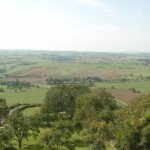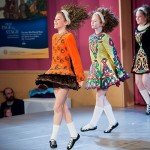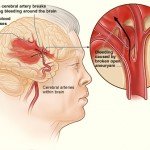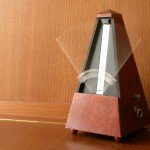Music and Neurosciences V – Blog 3 (Moving on the beat of music)
Hello Dear Reader
 Day 2 of Music and Neurosciences (Friday 30th May) delivered a bright blue sky over the city of Dijon. The short coffee break between the first session and this one was bathed in warm light, bringing out the soft colours of the city.
Day 2 of Music and Neurosciences (Friday 30th May) delivered a bright blue sky over the city of Dijon. The short coffee break between the first session and this one was bathed in warm light, bringing out the soft colours of the city.
I can definitely recommend Burgundy for your travels, dear reader.
The second morning session of Day 2 (Music and Neurosciences conference) was chaired by Simone Dalla Bella and Sonja Kotz. It focused on beat related training and rehabilitation.
 This field of research derives inspiration from the apparently natural human ability to entrain and move to a beat. This coupling of music and movement seems effortless for most, and therefore it offers promise as a purpose of performance enhancement for those who suffer from movement difficulties or who seek a movement boost (i.e. for sports performance).
This field of research derives inspiration from the apparently natural human ability to entrain and move to a beat. This coupling of music and movement seems effortless for most, and therefore it offers promise as a purpose of performance enhancement for those who suffer from movement difficulties or who seek a movement boost (i.e. for sports performance).
The first talk was by Eckart Altenmueller, a professor who is never without a kind smile as far as I can tell.
He has spent many years developing a form of movement related Music-supported Therapy (MST) as a way to improve motor function after stroke. This is a serious issue with 150,000 new stroke patients every year in Germany alone.
 The rationale for a music-related therapy comes from studies that have shown how musical activity can trigger reactivity of motor areas of the brain in people who only show auditory related brain activity following stroke.
The rationale for a music-related therapy comes from studies that have shown how musical activity can trigger reactivity of motor areas of the brain in people who only show auditory related brain activity following stroke.
Eckart presented two new adaptations to his successful pilot of MST, which included a sonification of arm movements (you move your arm and by that movement you create tones) as well as a delayed auditory feedback training for the keyboard.
in total, 26 patients took the first intervention and, to his credit, Eckart proudly declared that the intervention had no effect at all. It was clear that he only got this data shortly before the conference yet he had plenty of interesting ideas on how the paradigm could be improved. The delayed feedback task by comparison did result in improved performance on a movement task in stroke patients. One theory was that this delay gave time for the patients to focus their attention.
 The second talk was by Marc Leman who demonstrated his exciting new music synchronising software that he has called “DJogger”. This software comprises a music program that flexibly adapts to a person’s walking/running speed and even changes the track when there are sudden big changes in pace (i.e. going from a slow walk to a run).
The second talk was by Marc Leman who demonstrated his exciting new music synchronising software that he has called “DJogger”. This software comprises a music program that flexibly adapts to a person’s walking/running speed and even changes the track when there are sudden big changes in pace (i.e. going from a slow walk to a run).
The DJogger has taken many years of study to develop and 4 experiments were presented, the results of which helped to fine tune the tempo and phase parameters of the software. I can see this development having huge commercial implications – my friend who is a runner was very keen to have a go! Hopefully there will also be useful applications for patients with movement difficulties.
The third talker was Benoit Bardy who continued on with the theme of studying the link between music and body responses. He is interested in the Locomotor-Respiratory Coupling (LRC), a natural synchronisation between the locomotion system and the way that we breathe. In both running and cycling experiments Benoit demonstrated how music can have a stabilising effect on the LRC.

Finally we heard from one of the chairs, Simone Dalla Bella, who has been working on auditory cueing in patients with Parkinson’s. In my book I have written about many of the background studies that have shown a positive effect of Rhythmic Auditory Stimulation (RAS) on movement in this population of individuals. A simple metronome beat can help them to walk more fluidly with less freezing responses. Although this effect is well documented we know little about the underlying mechanisms.
Simone proposed two theories:
1) External rhythms support residual activity of the basal ganglia – thalamo-cortical pathway, which is damaged in Parkinson’s but may be re-stimulated by music
2) External rhythms trigger compensatory activity in other motor pathways that are relatively spared in Parkinson’s, such as cerebellum routes.
 At present, Simone does not have data to differentiate these theories but he has made progress in showing that auditory cueing in Parkinson’s patients can have benefits beyond their immediate motor needs, including boosts to time perception and tapping tasks. This finding suggests that the auditory cueing might be tapping into a general purpose timing mechanisms, an exciting possibility for future research to explore.
At present, Simone does not have data to differentiate these theories but he has made progress in showing that auditory cueing in Parkinson’s patients can have benefits beyond their immediate motor needs, including boosts to time perception and tapping tasks. This finding suggests that the auditory cueing might be tapping into a general purpose timing mechanisms, an exciting possibility for future research to explore.
After this session I had a wander in the direction of lunch and the poster session. As usual there was an impressive array of research on show and it would be impossible to document it all. The conference proceedings include abstracts for all posters that can be accessed for free from the Mariani Foundation.